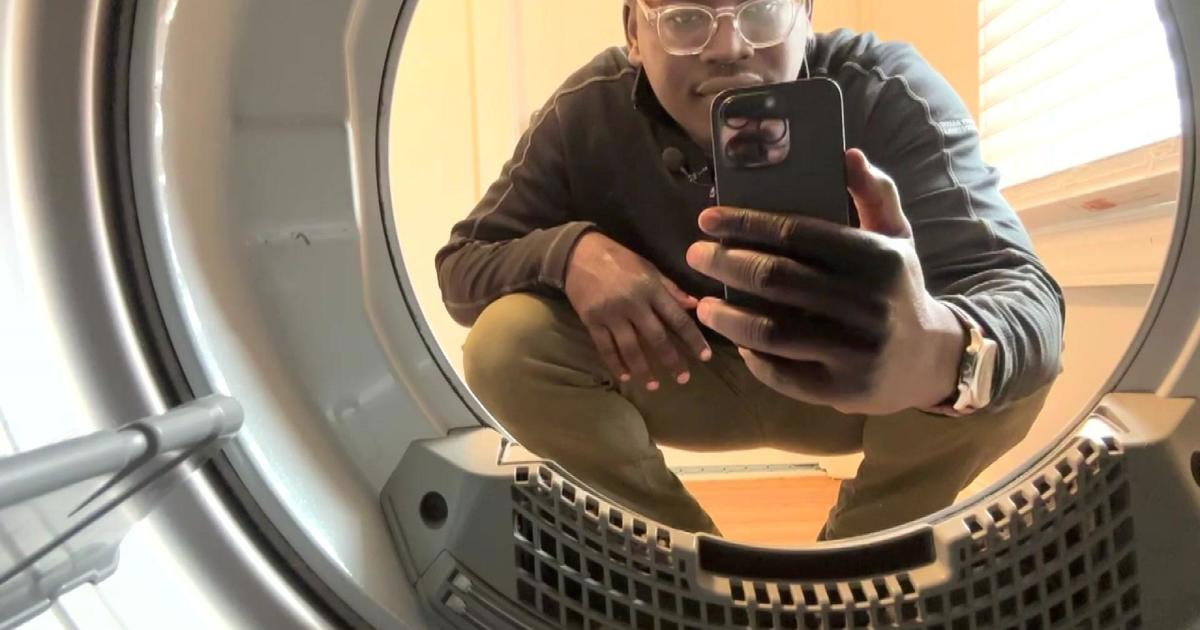Creating Your Personal Microclimate: The Search For The Perfect Winter Coat
MINNEAPOLIS (WCCO) -- Down or wool? Fleece or polyester? The search for the perfect winter coat can be overwhelming this time of year.
Before you fork over big money for a gift, or for yourself this holiday season, WCCO went inside the lab to see what really works to stay warm.
A countertop tucked in the back of the University of Minnesota's Wearable Technology Lab holds a few wires and special stitching and perhaps the secret to staying warm through our long winters.
Professor of apparel design, Lucy Dunne is in the first of a three-year research project to create what's called a personal microclimate, delivering heat to our bodies to keep us comfortable no matter the conditions.
"We're trying to figure out how much heat to supply to your body for your fingertips to stay warm," Dunne said. "When you're trying to keep warm you're really trying to keep the warm air that your body is producing from escaping," she added.
Minus all the cords, Dunne gave us a rundown of what works and what doesn't in a crowded market of winter coats.
"While it is important you have an insulating material, it's more important that the design of the garment is also keeping your body heat in," she said.
Dunne says we should first focus on layers and edges. Look for elasticized cuffs, drawstrings, fuzzy or fur edges on coats: anything that keeps material closer to your body to block drafts.
On a 20-degree day, with infrared camera in hand, we set out on campus to see what coats and jackets do a good job keeping folks we found warm.
"You need a scarf by the looks of this thing," Liz Collin said to one student.
Some materials tested better than others.
"It's from Old Navy. I got it on sale," one student told us.
"It does look like are your arms a little colder?" Liz Collin asked.
Yellow shows what's cool.
"You're bright yellow on your hands and your neck," Liz observed.
The darker shades are what you want.
"I got it this year so it's pretty new," a student told us.
A Columbia coat measured well on the test, but, there was a huge difference when the coat was zipped up.
"Feels good. I'm cozy," the student said after he zipped up his coat.
On Collin's Facebook page, friends suggested brands from Carhartt to North Face, while Heather Brown and I prefer what look like full-on sleeping bags this time of year.
"A stylish sleeping bag. It's all about balancing the aesthetic and the thermal comfort," Dunne said.
To our surprise, thermal comfort isn't as costly as you might expect. Dunne suggests giving that $90 coat a second look before spending $950.
"You can trap air very cheaply or trap it in very expensive ways, but in the end, it's really just insulation. You probably won't feel a really big difference," Dunne said.
Dunne believes down is a good insulator and says it doesn't have to be the real thing to work.
"Practically, you probably won't feel the difference between down and fiberfill," she said. "If you pack it down that makes it less insulating than if it has more loft," she added.
Wool also ranks high on her list in a wet snow scenario. It can absorb about half of its weight in water without feeling wet.
Back to that personal microclimate project, where there's a big goal, is designing clothes that let us turn down the heat.
"We're heating all these rooms that we don't use. If we can make you feel as comfortable in a colder room than all that unused heating we have a huge energy savings," she said.
Technology that could one day make the choice for a winter coat even easier.
You may have heard the saying, that you lose 80 percent of your body heat through your head?
Dunne said you don't have your head covered because your head is not prone to heat loss. She says it's like telling someone you're losing 80 percent of the heat in your house from an open window.



